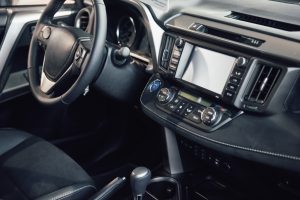In the vast universe of car customization, one term that stands out amidst the roaring engines and sleek designs is the “donk car. If you’ve ever laid eyes on a high-riding, big-wheeled car that seems to defy convention, chances are you’ve encountered a “donk.”
In recent years, donk cars, heavily modified automobiles that often grace television shows, social media, and racing events, have surged in popularity. However, the term “donk car” might leave many scratching their heads, especially those not deeply entrenched in the world of motor enthusiasts.
Let’s delve into the heart of this high-riding phenomenon and unravel the unique features that make donk cars a captivating and controversial subculture.
So, What is a Donk Car?
The term “donk” specifically points to a customized 1971-76 Chevrolet Caprice or Impala from 1971 to 1976, elevated to new heights with colossal wheels (24 inches being the minimum), low-profile tires, and ample ground clearance.
Beyond the wheels, true donks boast personalized graphics, extra chrome plating, intricate interiors, adjustable lighting, and robust entertainment systems. Suspension, body components, and even the drivetrain may undergo adjustments to accommodate these colossal rollers.
Recent years have seen a surge in performance modifications, with donks making appearances at major drag events like LS Fest. These cars often boast high-performance racing engines and eye-catching visual accents, making them a favorite among the younger crowd and hip-hop stars.
The Enigma Behind the Name
The origins are a bit mysterious. Some link it to the Impala logo resembling a donkey, others to the bouncing rear end reminiscent of a pack animal, and there’s even a suggestion tied to a slang term for a woman’s rear end. The debate continues.
Whatever the true origin, the donk phenomenon kicked off in the 1990s in South Florida and has since spread its influence across the nation. Initially seen as a fad, donk cars gained widespread recognition, especially in drag racing events where their aesthetic focus and high center of gravity defied conventional racing expectations.
Today, donk cars enjoy a prominent place in modern society, with dedicated garages and even the establishment of the National Donk Racing Association.
How Fast are Donk Cars?
While not every donk is built for speed, some boast over a thousand horsepower, challenging expectations and redefining the perception of these unique vehicles. Donk cars showcase surprising performance capabilities, particularly in drag racing events.
However, with great customization comes great risk. Donk cars often face mechanical issues like shattered wheel studs, broken lug nuts, blown suspensions, burnt transmissions, and subpar brakes.
Driving them presents challenges, with excessive speed in turns leading to loss of traction and potential spinouts. Moreover, their eye-catching nature makes them “cop magnets,” necessitating reinforced suspension, brakes, and tires for safer driving.
Considering the risks associated with donk customization, finding the right balance between aesthetics and functionality becomes paramount for enthusiasts. Striving to create visually stunning rides while adhering to regulations ensures a smooth and safe driving experience.

Considering building your own?
So, if you’re captivated by the donk world, make sure your journey begins with finding the right car. Clean, well-maintained 1971-76 Chevrolet Caprices or Impalas serve as ideal canvases for your customization dreams.
Wheels play a pivotal role, and manufacturers like Forgiato, Asanti, and Lexani offer options up to 32 inches. Once you’ve chosen your wheels, customization possibilities are vast. From widened wheel wells to painting, reupholstering, and power upgrades, the choices are yours.
Ultimately, the essence of the donk culture lies in individual expression. Whether you prefer flashy or understated, slow or fast, the key is to make it yours. Just remember, if it’s not a Chevy made between ’71 and ’76, it’s not a donk.
So, what cars are best suited for the donk treatment?
Delving into the best candidates for donk customization, classics like the Chevy Impala and Caprice steal the show, often referred to as Box Chevys. However, the Buick LeSabre, Cadillac Eldorado, Cadillac Escalade, Chevrolet Tahoe, Ford Crown Victoria, and Oldsmobile Cutlass also cut.
While debates persist about which vehicles deserve the donk label, the visual spectacle of these elevated rides captures attention, making them a mainstay in cities like Atlanta and Miami. Explore the best-used car websites to find your perfect canvas for donk customization.
How Much Does It Cost To Donk A Car?
Embarking on a donk journey comes with a price tag. Pre-built options range from $30,000 to $100,000. Recently, a ’71 Chevy Impala Vert just sold for a whopping $275,000.00, marking the highest price ever paid for a Donk!
For DIY enthusiasts, building a donk car involves significant expenses, with a powerful powertrain alone costing around $60,000. Customization and upgrades demand a financial commitment, ensuring a donk car stands out both aesthetically and performance-wise.
Our experts have reviewed some of the best cars to modify.
Challenges and Controversies
Detractors often point to the exaggerated features, particularly the towering lifts and oversized rims, as impractical and ostentatious. The high-rise lifts and oversized rims on donk cars have raised eyebrows not just for their appearance but also for potential legal and safety issues.
Some argue that these modifications may compromise stability and pose safety risks. Navigating these concerns becomes a balancing act for donk enthusiasts, as they seek to express their creativity while adhering to regulations and ensuring the safety of both the driver and others on the road.
One of the ongoing challenges in the donk culture is finding the equilibrium between aesthetics and functionality. Enthusiasts strive to create visually stunning rides without sacrificing the practical aspects of driving.
It’s a delicate dance that requires careful consideration of design choices, engineering principles, and the need for a smooth and safe driving experience.
Donk Cars and Insurance Considerations
Considering a flashy donk car? Ensure you have adequate insurance coverage, as these attention-grabbing vehicles can be magnets for thieves. Not all insurance companies cover modifications, so check with your provider before making changes.
Keeping your insurer in the loop about changes to your vehicle ensures you’re adequately protected in case of an accident or theft.
The type of modifications also influences premiums, with cosmetic enhancements generally costing less to insure than performance-enhancing mods. Keep your insurer in the loop about changes to ensure your policy is up-to-date, protecting in case of accidents or theft.
High Risers vs. Donk Cars
What sets a donk apart from a high riser? It boils down to the make and model of the vehicle. A true donk is a 1971-76 Chevy Caprice or Impala heavily customized with larger wheels and an oversized body kit. On the other hand, any other vehicle with similar modifications falls into the category of a high riser, irrespective of make and model.
Donk Cars Unveiled
In conclusion, the enigma of donk cars continues to captivate and challenge automotive enthusiasts. From their humble beginnings to the roaring machines we see today, donk cars represent more than just a modification trend; they embody individuality and a fearless approach to customization.
As the wheels keep turning and the culture evolves, donk cars remain high-powered, valuable car customizations that leave an indelible mark on the world of automotive expression.
Explore the streets, drive the unconventional, and embrace the uniqueness of donk cars – where the rubber meets the road and creativity knows no bounds.





